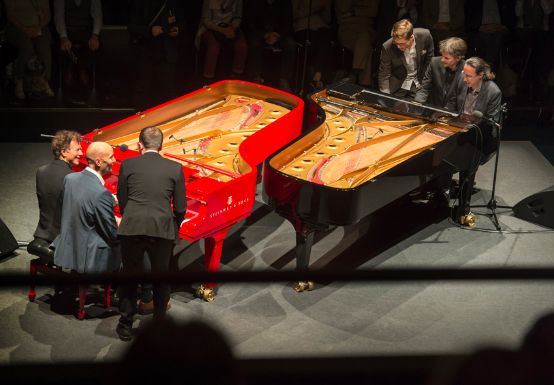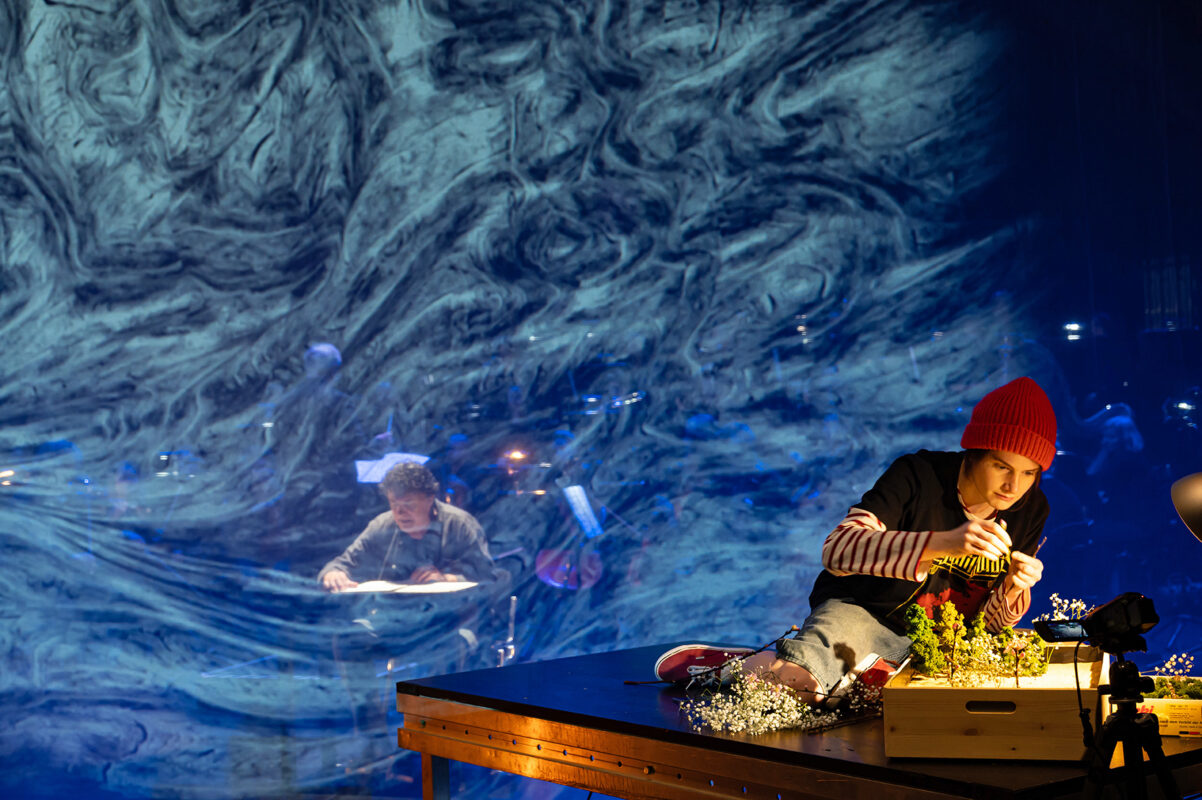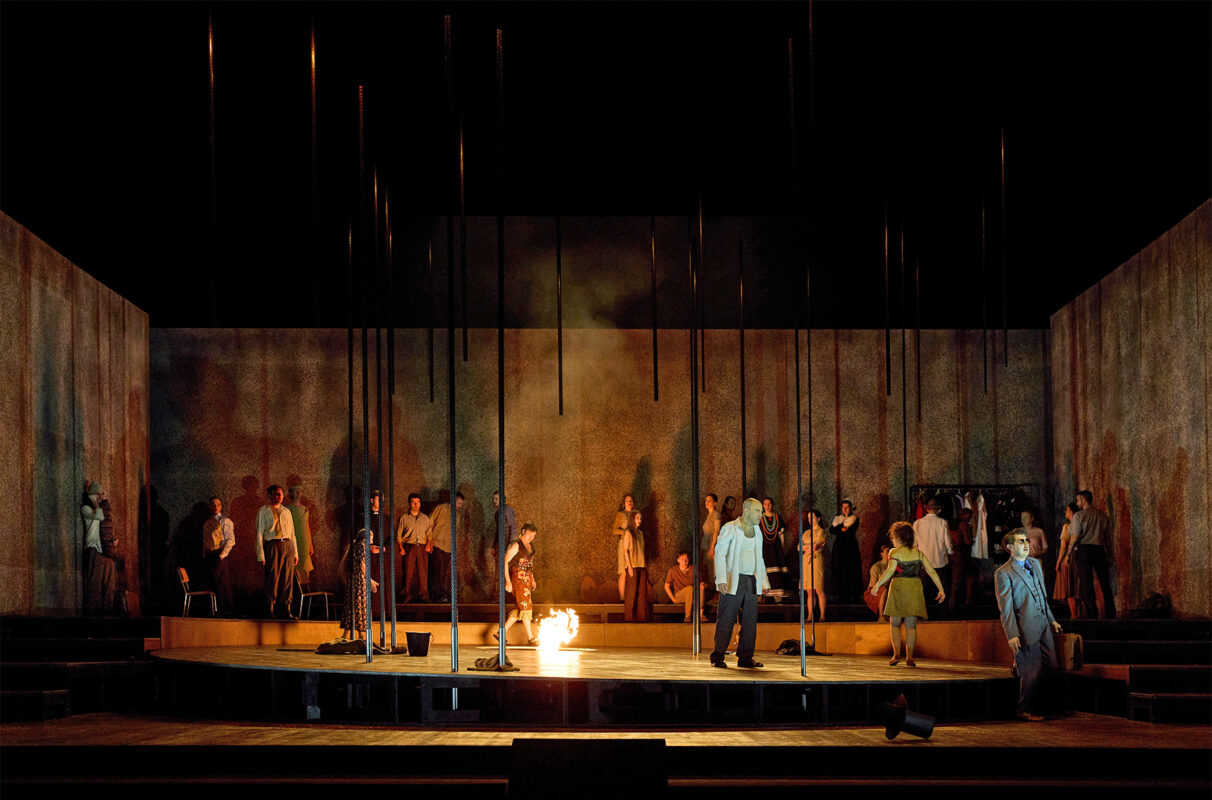Piano music red and black
From November 18 to 26, legendary master pianists and up-and-coming talents will be performing at the Lucerne Festival.

A black and a red grand piano stand on the stage of the Lucerne Hall in the Lucerne Culture and Convention Center (KKL). Every seat is already taken an hour before the opening of Piano Off-Stage. The presentation of the eight jazz and blues pianists, who also play in Lucerne hotel bars on the evenings, has been a cult event of the week-long Lucerne Festival Piano since its introduction in 2003. Here you can sit around the pianists free of charge and watch them improvise. You can even take your beer to your seat. Alessandro d'Episcopo is the first pianist to enter the ring. With the quiet jazz number dedicated to his daughter Lunita the evening starts on a contemplative note before the classically trained pianist Ayako Shirasaki from New York develops more swing. The audience did not experience a battle of vanities on stage, but a friendly atmosphere and a wide stylistic range between jazz, blues, boogie-woogie and ragtime. The young Swiss Maurice Imhof presented a grooving James Bond medley, while Lluís Coloma from Barcelona turned the piano into a pounding rhythm machine with virtuoso bass lines and accentuated chords. Things get even more exciting when presenter Andreas Müller-Crepon mixes two pianists together for sessions. It's improvised fun with fascinating musical dialogs before they stroll back to the bar arm in arm after their work is done. At the very end, all eight pianists stand and sit at the two grand pianos and play a blues together. Creative jostling on the keyboards! And the audience marvels and enjoys.
Exceptional concerts and debuts
The recital by Güher and Süher Pekinel also features two (black) concert grand pianos on the stage of the large hall. The Turkish twin sisters have been among the top international piano duos since the 1980s. Unlike their colleagues, they do not sit opposite each other when playing, but offset to one side. Without eye contact, they rely solely on their ears when playing together. Güher Pekinel's powerful inhalation on the first piano is enough - then the two sisters start playing Mozart's Sonata for two pianos in D major KV 448 together with millisecond precision. It's fascinating how congruent the unison passages and final chords are. With Martha Argerich, Evgeny Kissin and Daniil Trifonov, this year's fall offshoot of the summer festival once again presents exceptional artists from the piano scene. The so-called Keyboard Day, which combines three recitals with a lecture by Martin Meyer on Debussy interpretation, is an attempt to reach a different audience through lower admission prices and shorter concerts. The debut series with Beatrice Rana, Aglaia Graf and Christopher Park in St. Luke's Church, which takes place at midday, is also more casual. There is no champagne here, but "only" good music from young talents. Christopher Park has already played at the Freiburg Tent Music Festival this summer and has just made his debut with the SWR Symphony Orchestra with Mozart's A major concerto KV 488. The German-Korean pianist is a clever designer who always strikes a narrative tone in his playing. The work composed for him Trurl-Tichy-Tinkle (2016) by Olga Neuwirth is a virtuoso play with contrasts, which Park celebrated with relish in the well-filled Lukaskirche. In Stravinsky's Petrushka the daredevil pianist imagines an entire orchestra at the grand piano. Only in Franz Liszt's one-movement Dante Sonata does he pile up the mountains of chords too high. In the many fortissimo passages, the piano sound becomes hard and metallic. There is a lack of nuances and the right balance.
From interpretation to improvisation
The Venezuelan pianist Gabriela Montero is a good example of how sensitively one can deal with color nuances and dynamic differentiation. Her Children's scenes by Robert Schumann are bright, authoritative miniatures. Her interpretation of the second Shostakovich sonata combines relentless motor skills with powerful but never brutal outbursts of sound. The pianist has become known for her improvisations. A visitor sings the Swiss folk song from the gallery of the KKL There on the Bärgli, there stands a white ghost. Montero plays the melody twice before turning the theme to a minor key and taking it apart piece by piece. Bachian counterpoint meets the highest art of variation. Montero constantly invents new characters before she charmingly summarizes the whole thing and brings it to a heroic conclusion. The Mexican revolutionary song La Cucaracha treats them in a similar and yet completely different way. In the end, she ends up with ragtime - and could easily keep up with her jazz colleagues. Before the concert, Rossano Sportiello had already demonstrated at the red grand piano in the foyer how to play Beethoven's Ode to joy to a relaxed jazz ballad.
Lucerne Piano Festival 2017, until November 26th








